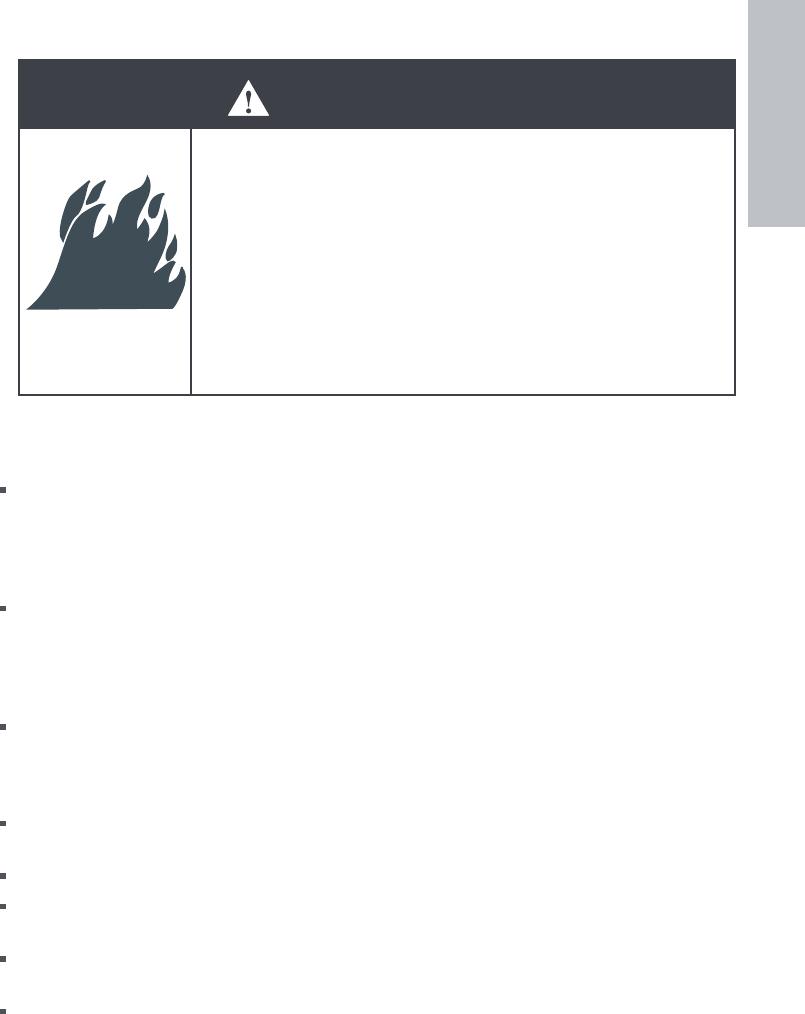
Important Safety Instructions
WARNING
Fire Hazard
Only dry fabrics that have been washed with water.
Do not use heat to dry articles containing foam rubber or
similarly textured rubber-like materials. Dry on the Air Dry cycle.
A clothes dryer produces combustible lint and must be
exhausted outdoors. Take care to prevent the accumulation of
lint around the exhaust opening and in the surrounding area.
Failure to follow these instructions can result in death or
personal injury.
To Reduce the Risk of Fire in a Tumble Dryer the Following Should
be Observed:
Do not place items in a tumble dryer that have previously been cleaned in, washed in, soaked
in, or spot cleaned with flammable liquids or solids. They are a fire or explosion hazard. Highly
flammable substances commonly used in domestic environments include acetone, denatured
alcohol, gasoline, kerosene, some brands of spot removers and dry cleaning solvents, turpentine,
waxes, wax removers, vegetable oil, fish oil, massage oil, and cooking oil.
Do not leave hot oil-affected items in a pile or stack. This can prevent heat from escaping and
can create a fire hazard. Oil-affected items can ignite spontaneously, especially when exposed to
heat sources such as a tumble dryer. The items become warm causing an oxidation reaction in
the oil. This oxidation creates heat. If the heat cannot escape the items can become hot enough
to catch fire.
Do not use heat to dry items containing rubber, foam rubber, plastic or similar materials, (such as
padded bras, bath mats, rugs, bibs, baby pants, plastic bags, pillows etc), as these materials might
melt or burn. Some rubber materials when heated can under certain circumstances produce fire
by spontaneous combustion. Dry only on the AIR DRY cycle.
Unless specifically recommended by their manufacturer, do not use fabric softeners or similar
products in a tumble dryer.
Do not store or use gasoline or other flammable gases and liquids near this or any other appliance.
Keep the area around and underneath your dryer free from the accumulation of combustible
materials such as lint, paper, rags, chemicals etc.
Do not store any items that may burn or melt (such as paper materials, plastics or plastic
containers etc) next to the dryer.
Empty the lint bucket before the lint reaches the top of the transparent section. (usually once
a week).
7
US
CA


















